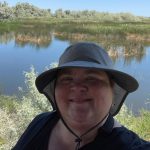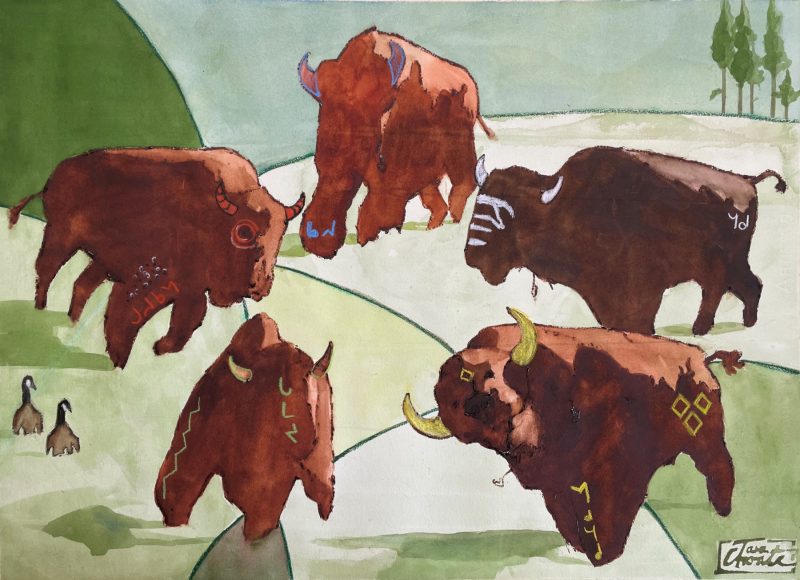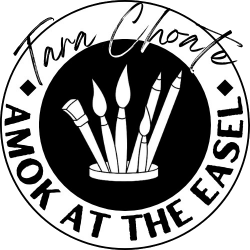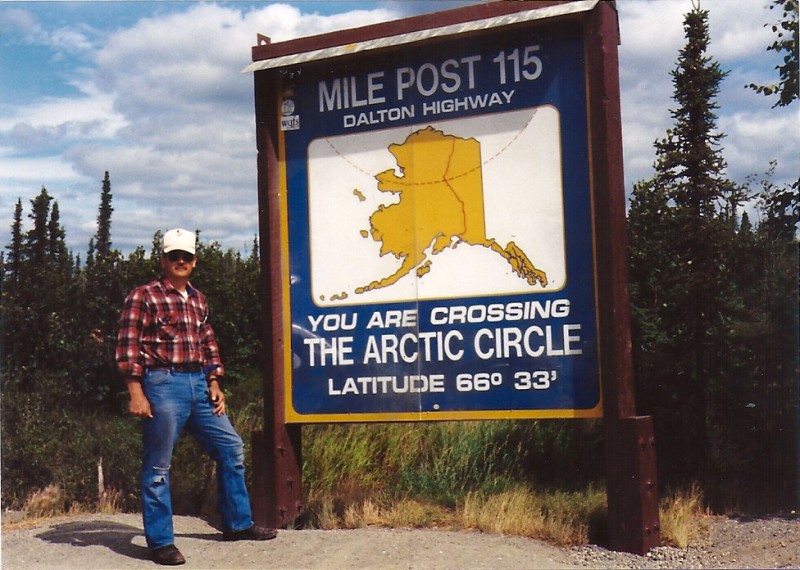I am having a tough time getting my application done. So, I thought maybe putting it online, in a format I normally write in might help. Here goes.
Voices of the Wilderness Alaskan A.I.R. Program – 2022
- Filled out my name,
- Checked off which areas I was interested in
- Listed references
- Created an artistic resume and portfolio
- Agreed to donate a painting
Statement of Purpose
Today’s wilderness managers work on a variety of fronts, educating the public, monitoring visitor trends, addressing invasive weeds, even responding to the global challenges of climate change and ocean acidification. As an artist in residence, you may work on projects connected to any of these issues. Why is this stewardship-based residency appealing to you? How do you see potential for your artwork and community extension to create dialogue about the issues facing our public lands? We are seeking artists interested in promoting and celebrating our Alaskan wilderness areas and creating dialogue about the challenges we face in a changing environment.
In my day job, I work at a tiny state agency called the Oregon Watershed Enhancement Board (OWEB). There, I process payments and discuss various fiscal issues. When I took the job, I never expected to fall in love with the program, to enjoy talking to project managers about weeds, or grantees about creating a salmon super-highway. To be excited hearing the farmers–who know exactly how profitable each acre is–agree to turn over a riparian area for restoration because they can advertise increased food safety on their product labels.
I’m continually fascinated with the balance of human interests versus natural restoration, and how the best results take a little longer. As I’ve learned more about restoration, challenges and successes continue to surprise me. “What’s good for the bird is good for the herd” is a recent sage grouse slogan. It’s so clever. And I had no idea elk enjoyed using fences as scratching posts.
One of my favorite recent projects was a cow field in the Coos River area. In order to create grazing land for the cows, the early pioneers had removed all the meanders from the stream, put in a tide gate, and created levies to control the water. OWEB funded a project that recreated the stream meander, putting “hard” rock passages so the cows could get to the many little peninsulas the meanders created. When I got a chance to tour the site, the project was nearing completion and the salmon were already coming back to the stream. I saw over 30 bird species on that little site. And the cows looked happy too.
I’m attracted to this residency because I feel like it will give me a broader scope for my understanding of restoration and the natural world. I paint a lot of animals, but I find myself wanting to talk about the challenges of habitat and landscape, too. I haven’t found just the right way to do it, but I feel like I’m edging closer with some of my recent work.
In 2020, I participated in the “For the Seventh Generation” project at the Elizabeth Jones Art Center for Social & Environmental Justice. This project requested hundreds of artists create a 48” x 24” panel. Each panel would eventually be arranged to show the coastline from Mexico to Canada. Working on the project was interesting, because it challenged me to think about what the coast really meant to me. Seeing the works of all the artists together was one of the most inspiring things I’ve ever seen.
Conversations in art and literature are one of the ways our society tries to talk to each other. For example, C.J. Box discusses the challenges of being a game warden in Wyoming, or Rita Mae Brown documents fox hunting in Virginia, art remains one of the few means of bringing people to the conversation. Both of these writers show me something I haven’t thought about before in managing nature’s resources. It’s not about right or wrong, it’s about asking the question.
I recently submitted an idea for a sculpture in the town where I live. The theme had to be four cows, to honor the former owners of the land where the roundabout now existed. I don’t work in sculpture, but the idea intrigued me. I ended up submitting an idea called “Rosalie’s Cows” which is about four hula-hooping cows. It’s meant to be silly, but it’s also a little bit about the joy cows feel just living a life not in a Concentrated Animal Feeding Operation (CAFO). I hope that the cows make people smile on their way to work, and I hope it inspires someone to think about what farming really means on the land.
As I admit in the physical description, I won’t be able to hike for miles or labor all day pulling weeds. But I think this residency will allow me time and ample inspiration to focus on my creativity and ideas, as well as a powerful reason to share this with the community.
Artwork Donation and Extension Description
The extension is to be a presentation in a community of your choice where you would share the experiences of your residency, as well as highlight the importance of public lands. You would also discuss how the wilderness and your work with wilderness specialists inspired you as an artist and share your creations, both field work and finished products. It may be a public talk/slideshow, a workshop, an art opening, etc. Collaborative projects and programs that coordinate with local schools and organizations are encouraged. The sky is the limit! In 4,000 characters or less, please provide a detailed description of your donated project and community extension; multiple ideas for both may be proposed.
Community Extension
1. I will write about this experience on my blog, posting photos and the art that comes from the experience on my blog (tarachoate.com).
2. Presentation at Salem Audubon Society focusing on birds, wildlife, and lands.
3. Workshop (art) at Watercolor Society of Oregon convention describing experience.
4. Submit proposals to local bird festivals, including Wild Wings (in Klamath Falls) about the experience.
5. Other suggestions welcome, including “work with agencies to develop an educational/promotional concept”
Artwork Donation
I will donate at least one painting, a minimum of 22”x15” in size. It will either be a panel piece or a framed piece.
Physical Description
A description of your physical condition, including any experience camping/traveling in a remote, harsh environment such as Alaska.
 What can I tell you about a 47-year-old woman who is morbidly obese? Obviously, if I’m lucky enough to get a chance to do this program, I won’t be able to hike for miles or climb mountains; long stretches of kayaking is also probably not a good idea. I am an avid birder, and frequently go out on bird walks with my local Audubon society. I’ve spent time camping and on small motorboats. I’m not afraid of getting dirty and wet and cold, and I’m not a complainer. I’m hoping for a placement that would include observing and monitoring wildlife.
What can I tell you about a 47-year-old woman who is morbidly obese? Obviously, if I’m lucky enough to get a chance to do this program, I won’t be able to hike for miles or climb mountains; long stretches of kayaking is also probably not a good idea. I am an avid birder, and frequently go out on bird walks with my local Audubon society. I’ve spent time camping and on small motorboats. I’m not afraid of getting dirty and wet and cold, and I’m not a complainer. I’m hoping for a placement that would include observing and monitoring wildlife.
Anything Else?
Is there anything else you’d like to share? Here’s your opportunity!
The summer I turned 12, my dad took a solo trip to Alaska. He planned the adventure for a year, deciding the route he would take, the things he wanted to see, the streams he would fish. He explored the Denali National Park as well as visiting friends in Anchorage. It seemed liked such an exotic adventure to me; six weeks of traveling and exploring.
My parents came from Montana, and we would spend large portions of the summer there. Dad would drive around and call out when he would see a red-tailed hawk along the side of the highway, or when we would discover an osprey nest on top of a power pole. It took me years to appreciate this, but each time I go out birding, I think “Dad would like that.”
Dad was a junior high industrial arts teacher. In college, he took some art classes and graduated with a major in art. After college, most of his artistic energy went into teaching shop and ceramics; he was a huge creative influence on me, from not allowing coloring books to pulling out his college textbook on Frank Lloyd Wright when I took drafting classes. I still remember discussing form versus function with him.
In spite of these connections, my dad and I had a difficult relationship. He was a Vietnam vet and carried a lot of baggage. He was also a junior high school teacher, which I can only imagine was difficult, especially when I became that same age. He died eight years ago from dementia, and I still grieve the relationship that could have been.
As much as the community aspect of this residency speaks to me, I have to admit that part of my motivation trying to appreciate this place my dad was so passionate about in his later years. As I have sorted through my parents’ estate, I smile each time I come across a carefully cataloged Alaska album.
My friends tell me I should use lots of great words for this essay: passion, expression, community, vision. But honestly, I’d just like to say that this amazing opportunity that would push me to stretch as an artist. I feel excited at the chance to express the challenges of resource management and to honor the relationships that have brought me to where I am today. And if Dad were alive, he’d be even more excited than me.
Artistic Sample
Include one artistic sample of your art on this application that best highlights your work.

This is a painting that came from a recent trip to Yellowstone National Park. I was up one morning and came across a heard of young bison in a field. They were sparing and playing, but to me it looked like they were dancing. This was the first painting I worked on from that trip. I added the decoration on the bison to honor the Native American tribes (specifically, the Blackfeet) that used that area.

